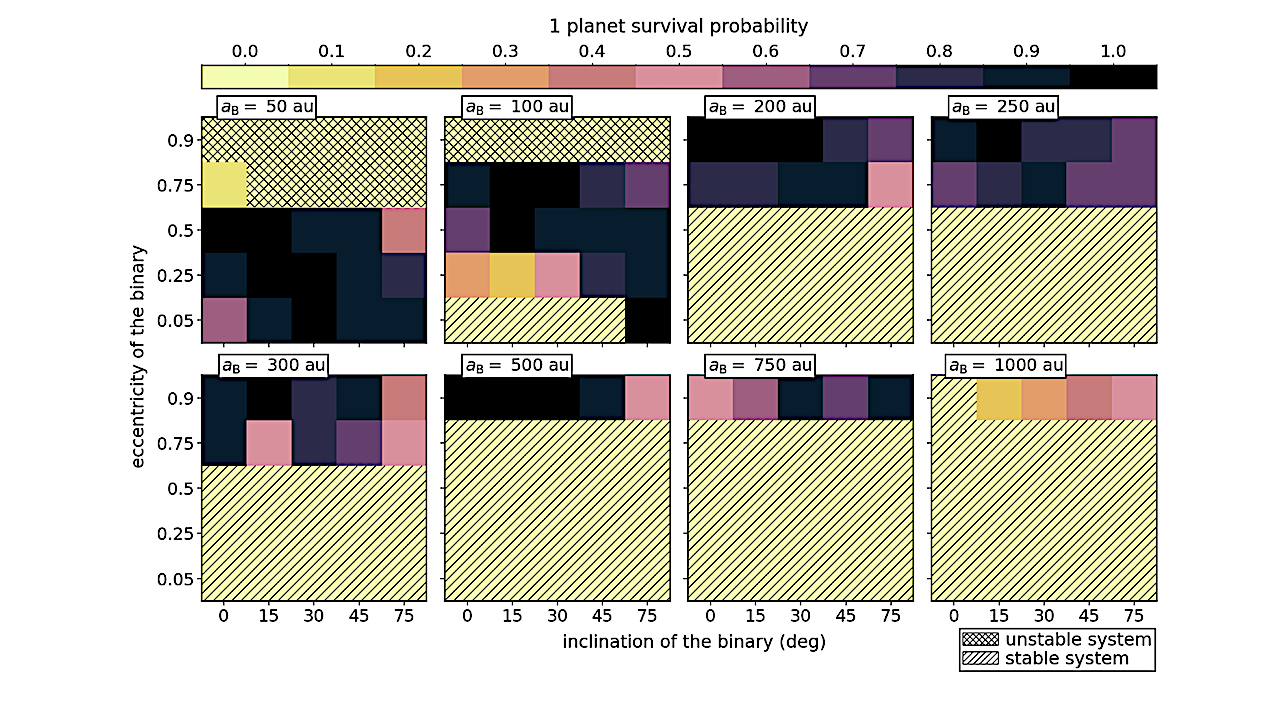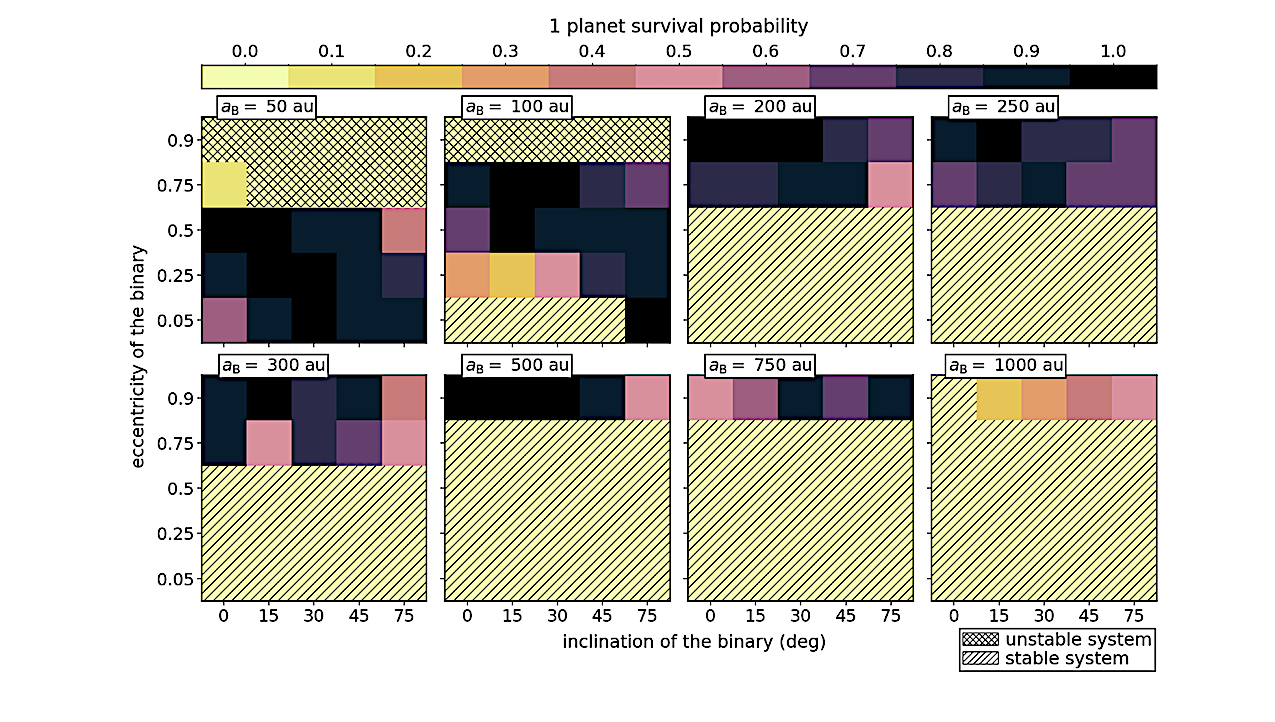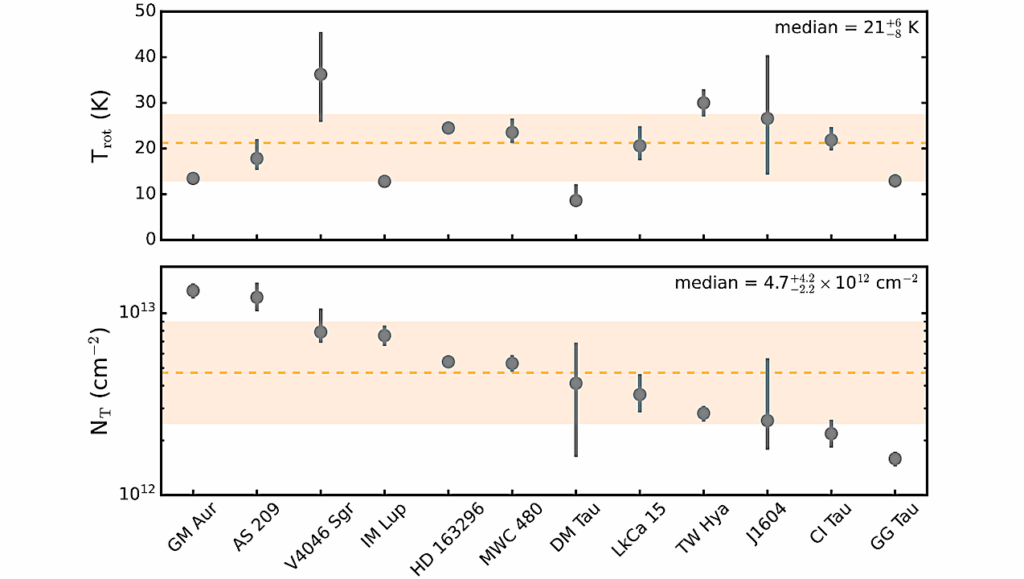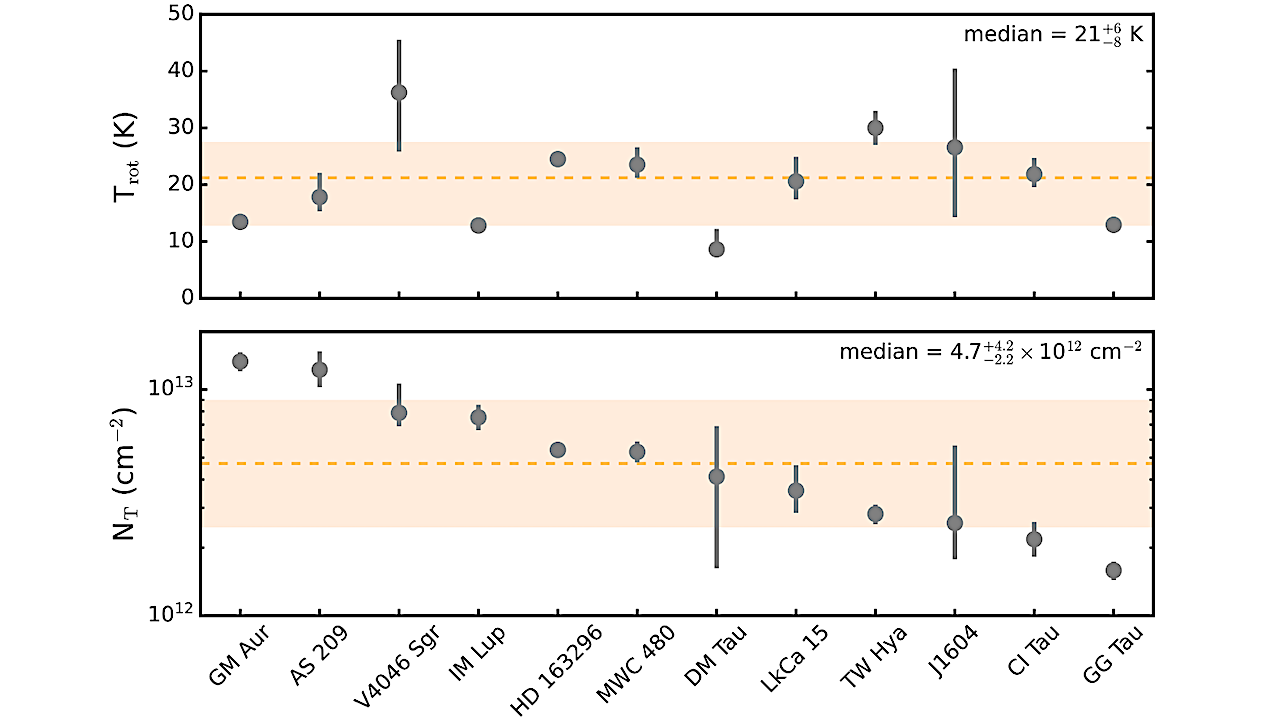Now Reading: Planetary Architectures Under The Influence Of A Stellar Binary
-
01
Planetary Architectures Under The Influence Of A Stellar Binary
Planetary Architectures Under The Influence Of A Stellar Binary


Survival probability of a single planet in a binary system that initially hosted three planets, across various orbital configurations. Each panel corresponds to a specific value of the binary’s semi-major axis aB, with the x- and y-axes showing the binary’s inclination iB and eccentricity eB, respectively. Shaded regions with crosses denote dynamically unstable configurations where no planets survive, while diagonal hatches indicate stable configurations in which all three initial planets remain bound throughout the simulation. — astro-ph.SR
Context. The presence of a stellar companion can strongly influence the architecture and long-term stability of planetary systems.
Motivated by the discovery of exoplanets exhibiting extremely high eccentricities (e >= 0.8) in systems with a binary companion, we investigate how planetary orbits around one star (S-type configuration) evolve under the gravitational perturbations of the companion.
Aims. We aim to assess the role of a stellar companion in shaping the orbital evolution of S-type planets and to explore whether dynamical interactions in such environments can account for the formation of highly eccentric planets.
Methods. We performed a suite of N-body simulations, modeling systems initially composed of three Jupiter-mass planets on nearly circular, coplanar orbits around the primary star. We systematically varied the semi-major axis, eccentricity, and inclination of the stellar companion, to characterize the conditions under which extreme eccentricities can be excited.
Results. Our results show that dynamical processes such as planet-planet scattering and secular mechanisms–including the von Zeipel-Kozai-Lidov effect induced by the binary–often act together to produce abrupt and significant changes in planetary orbital evolution, with the outcome strongly dependent on the binary separation.
The binary’s eccentricity primarily dictates the number of surviving planets, while its inclination not only governs the final eccentricities of those survivors but also drives their orbits to align with the binary plane.
Our simulations successfully reproduce the high eccentricities and compact orbits observed in four observed systems, showing close agreement between the modeled configurations and the actual systems.
Milenne Ávila-Bravo, Carolina Charalambous, Claudia Aguilera-Gómez
Comments: comments welcome
Subjects: Earth and Planetary Astrophysics (astro-ph.EP); Instrumentation and Methods for Astrophysics (astro-ph.IM); Solar and Stellar Astrophysics (astro-ph.SR)
Cite as: arXiv:2511.09676 [astro-ph.EP] (or arXiv:2511.09676v1 [astro-ph.EP] for this version)
https://doi.org/10.48550/arXiv.2511.09676
Focus to learn more
Submission history
From: Milenne Ávila-Bravo
[v1] Wed, 12 Nov 2025 19:29:01 UTC (1,890 KB)
https://arxiv.org/abs/2511.09676
Astrobiology, Astronomy,
Stay Informed With the Latest & Most Important News
-
 012024 in Review: Highlights from NASA in Silicon Valley
012024 in Review: Highlights from NASA in Silicon Valley -
 02Panasonic Leica Summilux DG 15mm f/1.7 ASPH review
02Panasonic Leica Summilux DG 15mm f/1.7 ASPH review -
 03How New NASA, India Earth Satellite NISAR Will See Earth
03How New NASA, India Earth Satellite NISAR Will See Earth -
 04And Thus Begins A New Year For Life On Earth
04And Thus Begins A New Year For Life On Earth -
 05Astronomy Activation Ambassadors: A New Era
05Astronomy Activation Ambassadors: A New Era -
06SpaceX launch surge helps set new global launch record in 2024
-
 07Space Force plans new ‘Futures Command’ amid pressure to speed up modernization
07Space Force plans new ‘Futures Command’ amid pressure to speed up modernization




















